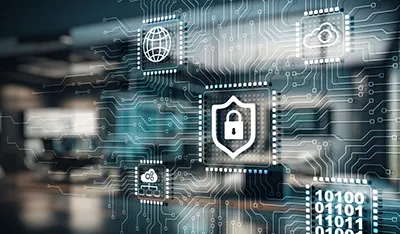Best Practices for Data Destruction to Strengthen Your Cyber Security Framework
Best Practices for Data Destruction to Strengthen Your Cyber Security Framework
Blog Article
Exactly How Appropriate Data Devastation Adds to Robust Computer System Security Providers and Mitigates Risks of Data Violations
In today's digital landscape, the relevance of proper data damage can not be overemphasized, as it acts as an essential component of comprehensive computer protection services. By executing effective information erasure strategies, companies not just shield delicate info from unauthorized gain access to however likewise boost their compliance with regulative frameworks - data destruction. Nevertheless, the effects of inadequate information destruction prolong past simple compliance; they can greatly influence a company's cybersecurity posture and credibility. Understanding these dimensions raises crucial concerns regarding the techniques in position and their efficiency in a period of intensifying cyber threats.
Relevance of Information Damage
In today's electronic landscape, the value of information devastation can not be overemphasized. As companies increasingly rely upon digital properties, the possible threats related to information breaches and unauthorized access enhance. Effective information destruction is an essential component of an extensive info security technique, guarding delicate information from falling right into the hands of malicious stars.
When data is no more needed, merely deleting documents or formatting hard drives is insufficient. Recurring information can usually be recouped making use of easily offered devices, presenting substantial dangers to both organizations and people. This highlights the requirement for robust information damage methods that guarantee all data is irretrievably removed.
Moreover, regulatory compliance requireds, such as GDPR and HIPAA, highlight the commitment to protect sensitive information, including its appropriate disposal. Non-compliance can lead to severe lawful repercussions and punitive damages. data destruction. Thus, integrating effective information destruction procedures not just boosts safety yet also fortifies an organization's online reputation and trustworthiness

Approaches of Secure Data Erasure
Several reliable methods of safe information erasure can be utilized to make certain that sensitive details is completely removed from storage space devices. One commonly acknowledged method is information overwriting, which entails replacing existing data with arbitrary patterns multiple times. This method substantially reduces the chances of information healing, although it may not work against sophisticated forensic methods.
Physical devastation is also a reputable method, where storage space gadgets are provided pointless with shredding, squashing, or incineration. This technique ensures that data can not be recovered whatsoever yet requires careful handling of dangerous materials.
Last but not least, specialized software program tools created for safe and secure information erasure give performances that abide by different erasure standards. These tools commonly consist of attributes like confirmation procedures to confirm successful data damage.
Employing these methods in combination can enhance information security and mitigate the threats connected with information violations, making sure that delicate info is not unintentionally revealed.
Legal and Conformity Considerations
The approaches used for protected data erasure not just serve to safeguard sensitive info however also has to line up with lawful and compliance structures regulating data defense. Organizations are needed to stick to different policies, such as the General Information Protection Law (GDPR), the Health Insurance Coverage Mobility and Responsibility Act (HIPAA), and the Repayment Card Sector Data Safety Requirement (PCI DSS) These regulations mandate details procedures for information managing and destruction, making certain that sensitive and personal information is irretrievably gotten rid of when no longer needed.
Failing to abide by these lawful requirements can result in substantial fines, including penalties and reputational damage. In addition, companies should maintain records of data devastation processes, showing conformity during audits or examinations. This paperwork not only safeguards versus legal repercussions but also strengthens count on with customers and stakeholders, showcasing a commitment to information safety and security.
Including lawful and compliance considerations right into data damage practices is essential for any kind of organization. It minimizes the threat of data violations and shows a proactive strategy to securing sensitive information, ultimately fostering a society of security and accountability throughout the company.
Influence On Cybersecurity Stance
Reliable data destruction dramatically improves a company's cybersecurity position by reducing the possible attack surface for cyber threats. When delicate data is not properly ruined, it continues to be obtainable to malicious stars who can exploit this info for unauthorized accessibility, identification burglary, or corporate espionage. By applying durable data destruction procedures, companies can efficiently reduce the danger of data violations and improve their overall safety and security structure.
Additionally, the protected disposal of unneeded or out-of-date data not just protects delicate details but additionally assists organizations abide by industry policies and requirements. Failure to effectively damage information can result in severe legal consequences and reputational damages, further endangering a company's cybersecurity stance.

Eventually, focusing on efficient information devastation is vital my company for fostering a robust cybersecurity position, making sure that organizations remain watchful versus advancing cyber hazards while securing their important possessions and stakeholders.
Ideal Practices for Organizations
Executing ideal practices for data damage is vital for companies intending to safeguard delicate information and mitigate cybersecurity threats. Organizations ought to develop a comprehensive information devastation policy that lays out obligations and procedures. This policy ought to follow appropriate policies, such as GDPR or HIPAA, guaranteeing lawful conformity.
Secondly, it is essential to make use of accepted data sanitization methods, consisting of data wiping, degaussing, and physical devastation, tailored to the sort of information and storage tool. Employing licensed experts for data damage services improves the reliability of these techniques.
Additionally, organizations ought to preserve a thorough stock of all data storage tools, making certain that all outdated or changed equipment undergoes damage. Routine audits of information damage techniques can assist boost and identify weak points compliance.
Worker training is another important aspect, as team needs to understand the significance of data devastation and abide by established methods. Companies should record all data destruction activities to provide responsibility and traceability, which can be very useful throughout audits or in the event of a violation.
Final Thought

One extensively recognized method is information overwriting, which involves replacing existing information with arbitrary patterns multiple times.The methods utilized for safe information erasure not just offer to secure delicate info yet also must align with lawful and conformity frameworks controling information protection. These policies mandate specific methods for information dealing with and damage, making certain that personal and sensitive information is irretrievably gotten rid of when no longer needed.
By executing robust data destruction protocols, organizations can effectively reduce the risk of information breaches and boost their general safety and security structure.
In verdict, appropriate data damage is crucial for improving computer safety solutions and minimizing the threats linked with data violations. - data destruction
Report this page